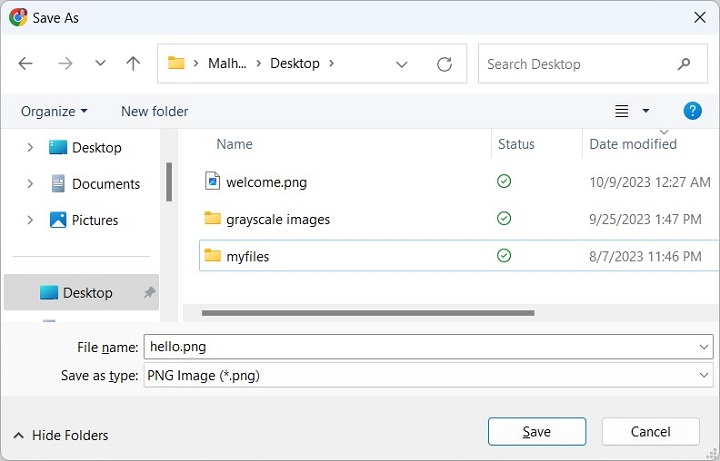Most modern browsers allow files of certain types to be downloaded automatically, without any server-side code such as a PHP script. For example, a zip file, or an EXE file.
If an HTML hyperlink points to a ZIP or EXE file, the browser downloads it and pops up a save dialog. However, text files, image files, etc., are not downloaded but opened in the browser, which you can save to your local filesystem.
The readfile() Function
To download such files (instead of the browser automatically opening them), we can use the readfile() function in PHP’s built-in function library.
readfile(string$filename,bool$use_include_path=false,?resource$context=null):int|falseThis function reads a file and writes it to the output buffer.
The second parameter $use_include_path is false by default, hence the file in the current directory will be downloaded. If set to true, the directories added to the include_path setting of php.ini configuration will be searched to locate the file to be downloaded.
The readfile() function returns the number of bytes read or false even it is successfully completed or not.
Example
The following PHP script shows the usage of readfile() function.
To download a file, the Content-Type response header should be set to application/octect-stream. This MIME type is the default for binary files. Browsers usually don’t execute it, or even ask if it should be executed.
Additionally, setting the Content-Disposition header to attachment prompts the “Save As” dialog to pop up.
<?php
$filePath = 'welcome.png';
// Set the Content-Type header to application/octet-stream
header('Content-Type: application/octet-stream');
// Set the Content-Disposition header to the filename of the downloaded file
header('Content-Disposition: attachment; filename="'. basename($filePath).'"');
// Read the contents of the file and output it to the browser.
readfile($filePath);
?>Save the above script as “download.php” in the document root folder. Make sure that the file to be downloaded is present in the same folder.
Start the server and visit http://localhost/download.php in the browser. You will get a “Save As” dialog as below −

You can select a name and download the file.
For a large file, you can read it from the file stream in the chunk of a certain predefined size. The browser offers to save it in the local filesystem, if the Content-Disposition head is set to “attachment”, as in the previous example.
<?php
$filename = 'welcome.png';
header('Content-Type: application/octet-stream');
header('Content-Disposition: attachment; filename="' . basename($filename) . '"');
$handle = fopen($filename, 'rb');
$buffer = '';
$chunkSize = 1024 * 1024;
ob_start();
while (!feof($handle)) {
$buffer = fread($handle, $chunkSize);
echo $buffer;
ob_flush();
flush();
}
fclose($handle);
?>
Leave a Reply